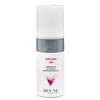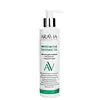What's inside
What's inside
 Key Ingredients
Key Ingredients

No key ingredients
 Benefits
Benefits

 Concerns
Concerns

 Ingredients Side-by-side
Ingredients Side-by-side

Water
Skin ConditioningCocamidopropyl Betaine
CleansingSodium Cocoamphoacetate
CleansingAcrylates/Beheneth-25 Methacrylate Copolymer
Sodium Cocoyl Glutamate
CleansingDisodium Cocoyl Glutamate
CleansingGlycerin
HumectantCocamide DEA
EmulsifyingMalva Sylvestris Extract
AstringentChlorphenesin
AntimicrobialPhenoxyethanol
PreservativePanthenol
Skin ConditioningAllantoin
Skin ConditioningParfum
MaskingCitric Acid
BufferingSodium Hydroxide
BufferingWater
Skin ConditioningCoco-Glucoside
CleansingCocamidopropyl Betaine
CleansingDisodium Laureth Sulfosuccinate
CleansingLaureth-2
CleansingPEG/PPG-120/10 Trimethylolpropane Trioleate
Niacinamide
SmoothingCalendula Officinalis Flower Extract
MaskingChamomilla Recutita Flower Extract
MaskingGlycyrrhiza Glabra Root Extract
BleachingMelissa Officinalis Leaf Extract
Skin ConditioningPanax Ginseng Root Extract
EmollientRosa Canina Fruit Extract
AstringentCitric Acid
BufferingMethylchloroisothiazolinone
PreservativeMethylisothiazolinone
PreservativeWater, Coco-Glucoside, Cocamidopropyl Betaine, Disodium Laureth Sulfosuccinate, Laureth-2, PEG/PPG-120/10 Trimethylolpropane Trioleate, Niacinamide, Calendula Officinalis Flower Extract, Chamomilla Recutita Flower Extract, Glycyrrhiza Glabra Root Extract, Melissa Officinalis Leaf Extract, Panax Ginseng Root Extract, Rosa Canina Fruit Extract, Citric Acid, Methylchloroisothiazolinone, Methylisothiazolinone
Ingredients Explained
These ingredients are found in both products.
Ingredients higher up in an ingredient list are typically present in a larger amount.
Citric Acid is an alpha hydroxy acid (AHA) naturally found in citrus fruits like oranges, lemons, and limes.
Like other AHAs, citric acid can exfoliate skin by breaking down the bonds that hold dead skin cells together. This helps reveal smoother and brighter skin underneath.
However, this exfoliating effect only happens at high concentrations (20%) which can be hard to find in cosmetic products.
Due to this, citric acid is usually included in small amounts as a pH adjuster. This helps keep products slightly more acidic and compatible with skin's natural pH.
In skincare formulas, citric acid can:
While it can provide some skin benefits, research shows lactic acid and glycolic acid are generally more effective and less irritating exfoliants.
Most citric acid used in skincare today is made by fermenting sugars (usually from molasses). This synthetic version is identical to the natural citrus form but easier to stabilize and use in formulations.
Read more about some other popular AHA's here:
Learn more about Citric AcidCocamidopropyl Betaine is a fatty acid created by mixing similar compounds in coconut oil and dimethylaminopropylamine, a compound with two amino groups.
This ingredient is a surfactant and cleanser. It helps gather the dirt, pollutants, and other impurities in your skin to be washed away. It also helps thicken a product and make the texture more creamy.
Being created from coconut oil means Cocamidopropyl Betaine is hydrating for the skin.
While Cocamidopropyl Betaine was believed to be an allergen, a study from 2012 disproved this. It found two compounds in unpure Cocamidopropyl Betaine to be the irritants: aminoamide and 3-dimethylaminopropylamine. High-grade and pure Cocamidopropyl Betaine did not induce allergic reactions during this study.
Learn more about Cocamidopropyl BetaineWater. It's the most common cosmetic ingredient of all. You'll usually see it at the top of ingredient lists, meaning that it makes up the largest part of the product.
So why is it so popular? Water most often acts as a solvent - this means that it helps dissolve other ingredients into the formulation.
You'll also recognize water as that liquid we all need to stay alive. If you see this, drink a glass of water. Stay hydrated!
Learn more about Water